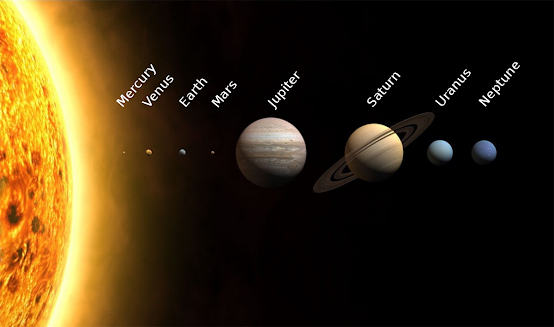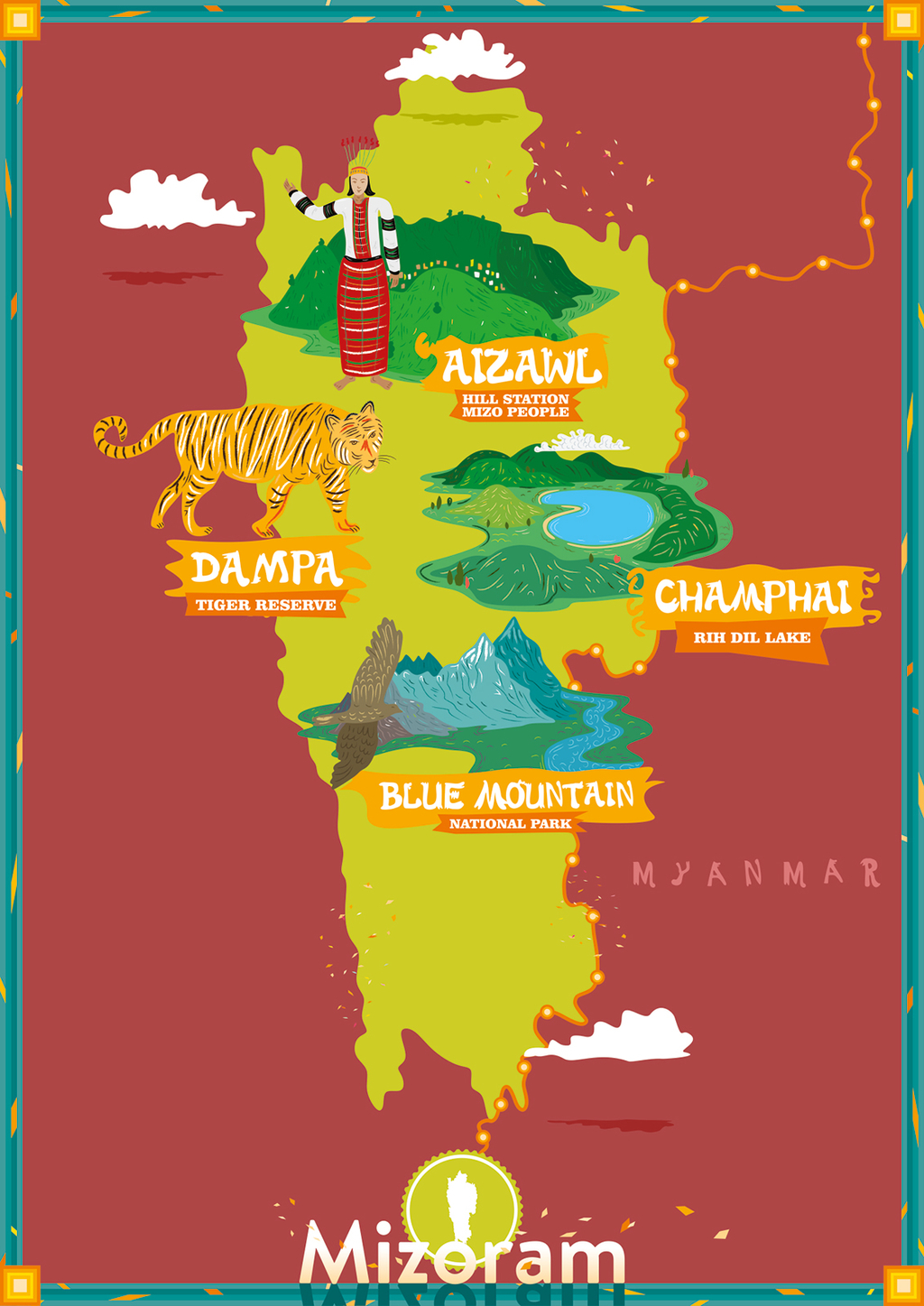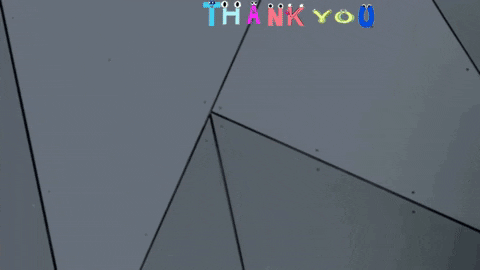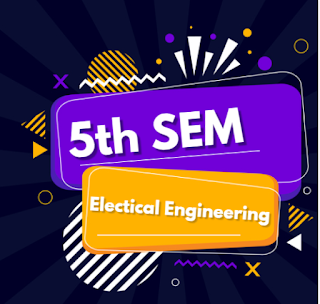Important Facts of Solar System
 |
| Image Source: Wikipedia |
We live on a planet named ‘Earth’. Likewise, Earth also exists in its home with other 7 planets, only star ‘Sun’ and many other small objects called asteroids, comets, dwarf planets, meteors etc. So basically the Solar system is a system of Sun, 8 planets, dwarf planets, asteroids, meteors and comets under the gravitational influence of the Sun.
Origin
- There are 3 to 4 major theories of the evolution of the universe and ultimately of the solar system. The prominent theory among all of these is the Big Bang theory.
- According to this theory proposed by Georges Lemaitre, the universe is evolved from a small singularity and then expands over the next 13.8 billion years and still expanding.
- It led to the formation of many billions of galaxies, solar systems, stars etc.
- Our solar system lies in a spiral-shaped galaxy called ‘Milky Way’. The nearest galaxy to us is ‘Andromeda’.
- Generally, there is a Black hole at the centre of every galaxy. ‘Sagittarius A’ is the black hole at the centre of Milky Way.
Solar System
- In our solar system, 8 planets and many other celestial bodies revolve around the sun in elliptical orbits.
- The dwarf planet named Pluto was removed from the list of the planets by the International Astronomical Union in 2006.
- Sun is the powerhouse of the solar system. It is the only source of energy in the solar system.
- Planet Mercury is nearest to the sun while Neptune is the farthest planet from the sun.
- There is an asteroid belt between Mars and Jupiter. Planets inside the belt are distinctly different from those outsides in terms of size, mass, and composition etc.
- Planets inside the belt are called Terrestrial planets and they are Mercury, Venus, Earth, and Mars. Planets outside the best are called Jovian planets and they are Jupiter, Saturn, Uranus, and Neptune.
- Terrestrial planets are nearer to the sun, with metallic minerals and rock crust, with a thin atmosphere and have less number of natural satellites. While Jovian planets are away from Sun, made up of hot gases, have rings around them, and have a large number of natural satellites.
Facts about the Sun and Planets
1. Sun
- The only star in our solar system and powerhouse of the solar system.
- Composed of Hydrogen (73%), Helium (25%) gases and other metals. Sun carries almost 99% mass of our solar system.
- Approximately 15 crore Kilometres further away from Earth. It takes around 8 minutes 30 seconds for light at the speed of 3 lakh Km/sec to reach the earth.
- Temperature at surface= 5800 K or 5600 degree Celsius.
- Temperature at the centre= 15.7 million K
2. Mercury
- Closest planet to the Sun and very hot planet.
- Smallest planet in the solar system with a diameter of 4900 Km.
- Fastest Planet with speed of 172500 Km per hour to complete revolution around Sun in 88 days.
- The planet with no water and gases like Nitrogen, Hydrogen, Oxygen and Carbon Dioxide.
3. Venus
- Hottest planet in the solar system with the surface temperature of 478 degree Celsius.
- Also known as “Earth’s Twin”. It is because of the similarity in size and mass between Venus and Earth.
- One of the two planets in the solar system which rotate around the axis in a clockwise direction.
- Brightest Star in the Solar system. It can be seen in the morning and evening with open eyes. So known as “Evening Star” and “Morning Star”.
4. Earth
- The only Planet to give support to life with a pleasant atmosphere.
- Also known as “Blue Planet” because of the presence of water on it.
- It has one natural satellite named “Moon”.
5. Mars
- Known as “Red Planet” because of Iron-rich red soil.
- Second smallest planet in the solar system after Mercury.
- Has two natural moons “Phobos” and “Deimos”.
- Has a thin atmosphere and surface with valleys, craters, deserts, and ice caps etc.
- “Olympus Mons” – Largest volcano and the tallest mountain in the solar system lies on Mars.
6. Jupiter
- Largest planet of the solar system with the shortest rotation
- Has an atmosphere filled with Hydrogen, Helium and other gases
- The third brightest object in the night sky after the Moon and Venus.
- Great Red Spot, a giant storm in the solar system exists on this planet.
- Has at least 79 moons, including 4 large Galilean Moons “Io, Europa, Ganymede, and Callisto” which were discovered by Galileo. “Ganymede” is the largest among them.
- It has an unclear ring around it.
7. Saturn
- Second largest planet in the solar system and a gas giant.
- Has bright and concentric rings around it which are made up of tiny rocks and pieces of Ice.
- Saturn can float on water because it has less density than water.
- Has at least 82 moons and Titan is the largest among them.
8. Uranus
- Has the third-largest planetary radius and fourth-largest planetary mass in the Solar system.
- Greenish in colour.
- Discovered by William Herschel in 1781.
- Known as “Ice Giant”. The atmosphere of Uranus is composed of Hydrogen and Helium primarily, but it also contains more water, ammonia etc.
- Has coldest planetary atmosphere in the solar system.
- Rotates clockwise on its axis like Venus but unlike other planets
- Has at least 27 moons. Famous moons- Miranda, Ariel and Umbriel
9. Neptune
- Farthest planet from the Sun.
- It is also “Ice Giant”. Atmosphere primarily composed of Hydrogen and Helium.
- Bluish in colour because of Methane.
- Fourth largest planet and the third most- massive planet in the solar system
- Discovered by Johann Galle and Urbain Le Verrier in 1846. The only planet in the solar system found by Mathematical Predictions.
- Has known 14 satellites. Famous moon – Triton.
10. Pluto
- As per the new definition of Planets determined by International Astronomical Union (IAU), Pluto has been omitted from the list of planets in 2006.
- Pluto is considered as a dwarf planet (size between planets and asteroids) now and it is a member of Kuiper Belt.
- Kuiper Belt is a spherical boundary outside the orbit of Neptune containing a number of asteroids, rocks, and comets.
Other Space Objects
1. Asteroids
- These are small objects; rocks (mostly debris) revolve around the Sun.
- They are mostly found in the Asteroid Belt which lies between the orbits of Mars and Jupiter.
- These are also known as Minor planets.
- Ceres, Vesta, Psyche are some famous and largest asteroids in the solar system.
2. Meteors and Meteorites
- These are also known as Shooting stars.
- Meteors are the small-sized rocky material which is generally formed due to asteroid collision and approaching the earth.
- Because of Earth’s atmospheric layers, these small rocks burn before reaching the surface.
- But there are some meteors which do not burn completely and land on Earth’s surface. They are called as Meteorites.
- Willamette, Mbozi, Cape York, and El Chaco are some meteorites found on the Earth.
- Lonar lake, Maharashtra in India is supposed to be created by a meteor impact in Pleistocene Epoch.
3. Comets
- These are shiny, luminous “Tailed Stars”. These are rocky and metallic materials surrounded by frozen gases.
- These are generally found in Kuiper Belt. They travel towards the Sun.
- Their tail faces opposite of the sun and head faces towards the Sun.
- They become visible when they travel close to the Sun.
- Halley comet is famous which appeared last time in 1986 and which reappears after every 76 years






